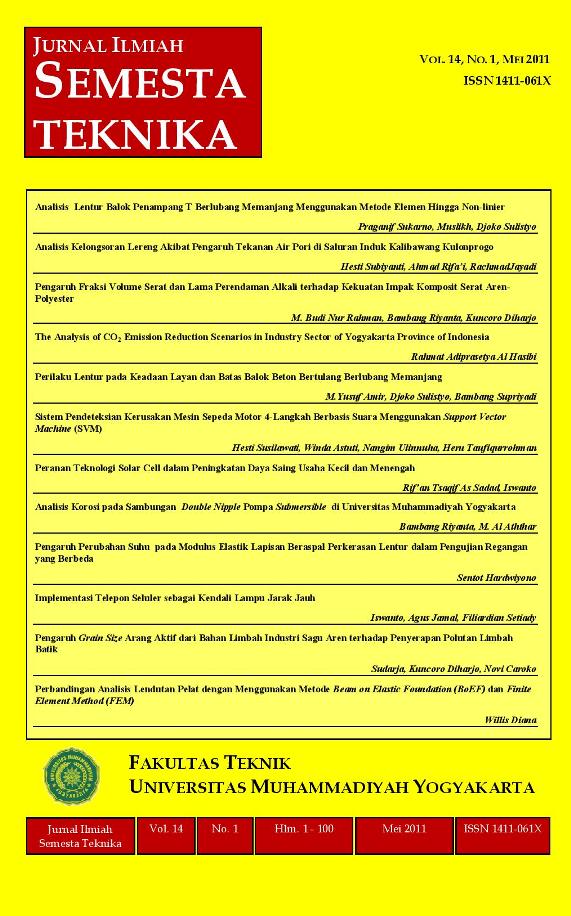Pengaruh Fraksi Volume Serat dan Lama Perendaman Alkali terhadap Kekuatan Impak Komposit Serat Aren-Polyester
DOI:
https://doi.org/10.18196/st.v14i1.567Abstract
Palm fiber waste in the industrial processing of starch sugar palm has potential as reinforcing material composite material. This research to determine the effect of fiber volume fraction and long immersion in alkaline solution (NaOH) 5% for the impact strength composites waste palm fiber-polyester. The material used is a waste of palm fiber, unsaturated polyester 157 BQTN, MEKPO catalyst and 5% alkaline solution. Preparation of composites made by the method of press mould. The Composites made with variations of the volume fraction of 10%, 20%, 30%, 40%, 50% and long immersion alkali solution is 0, 2, 4, 6, and 8 hours. The impact test conducted by Izod impact testing machine refers to the standard ASTM D 5941. The results showed that increasing the volume fraction will increase the impact strength, but the subsequent decline. The longer the alkali treatment will reduce the impact strength because the fiber has undergone treatment. The impact strength maximum of the composites with fiber volume fraction of 40% and without alkaline immersion of 0.3211 J/mm2. Characteristics of a broken section of palm fiber composite material are a polyester matrix of a single fracture.
Downloads
Published
How to Cite
Issue
Section
License
Semesta Teknika is licensed under a Creative Commons Attribution 4.0 International License.
Authors who publish with this journal agree to the following terms:
- Authors retain copyright and grant the journal right of first publication with the work simultaneously licensed under a Creative Commons Attribution License that allows others to share the work with an acknowledgement of the work's authorship and initial publication in this journal.
- Authors are able to enter into separate, additional contractual arrangements for the non-exclusive distribution of the journal's published version of the work (e.g., post it to an institutional repository or publish it in a book), with an acknowledgement of its initial publication in this journal.
- Authors are permitted and encouraged to post their work online (e.g., in institutional repositories or on their website) prior to and during the submission process, as it can lead to productive exchanges, as well as earlier and greater citation of published work (See The Effect of Open Access).









